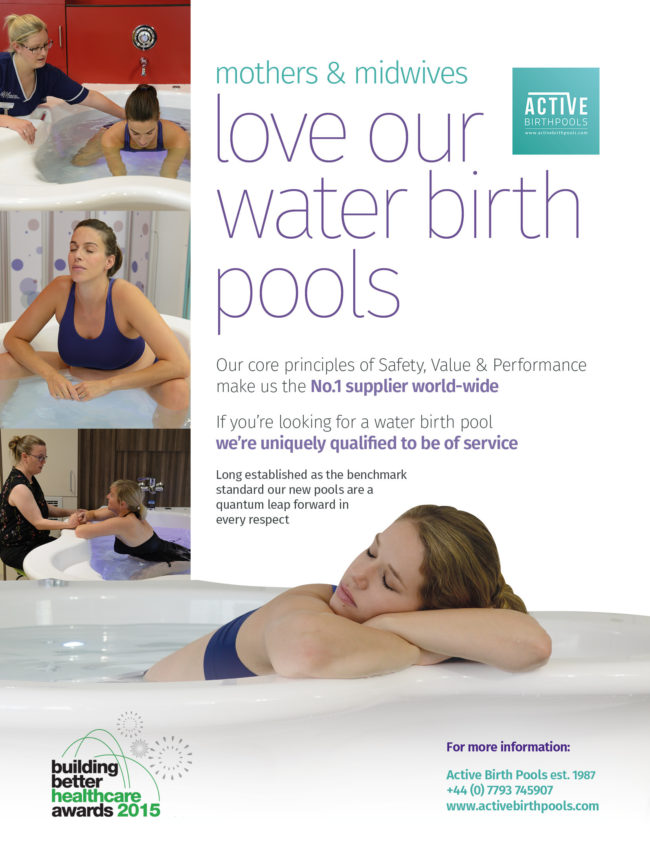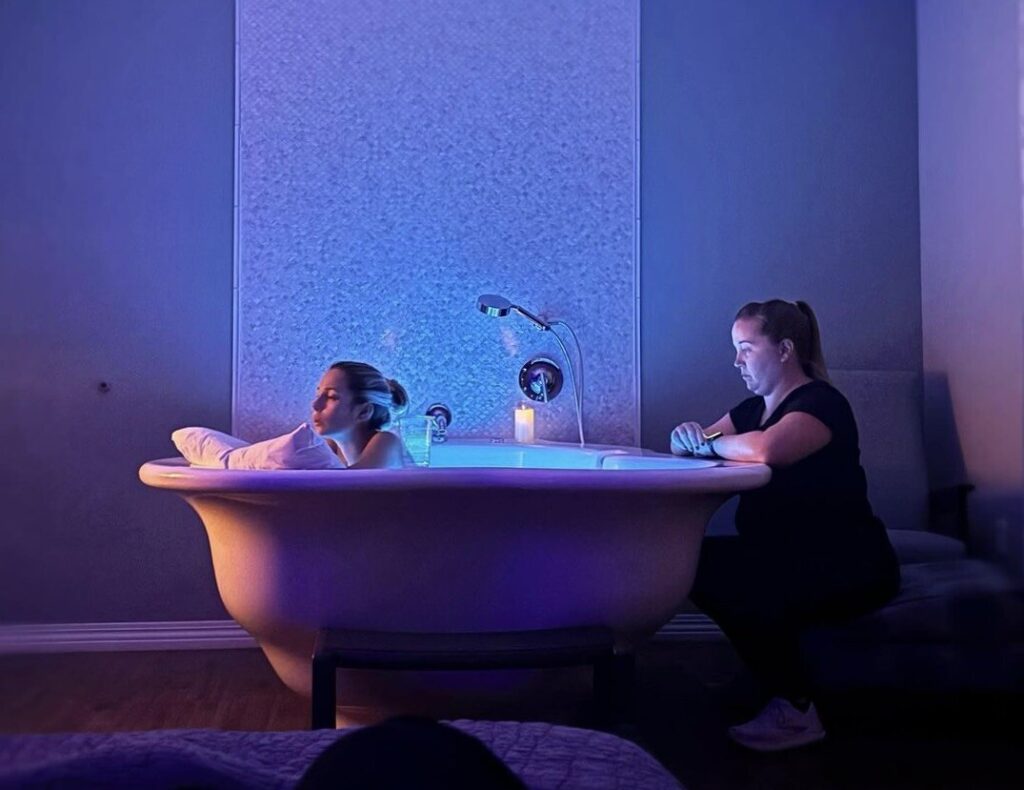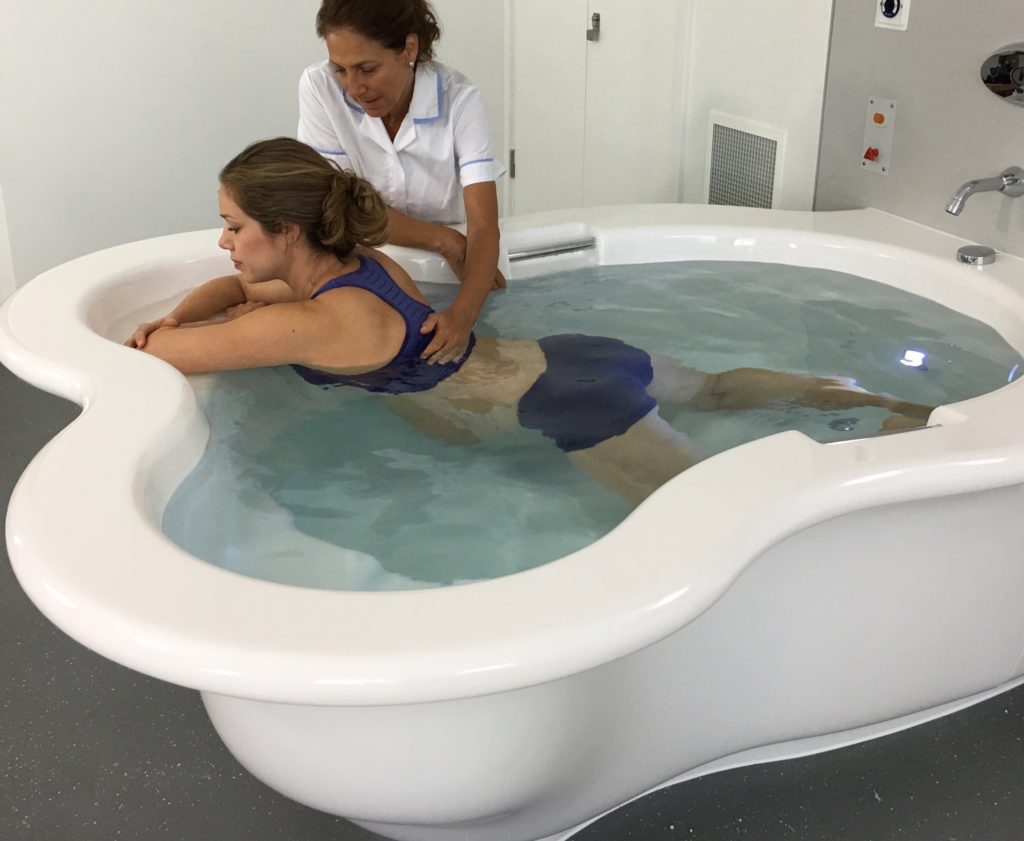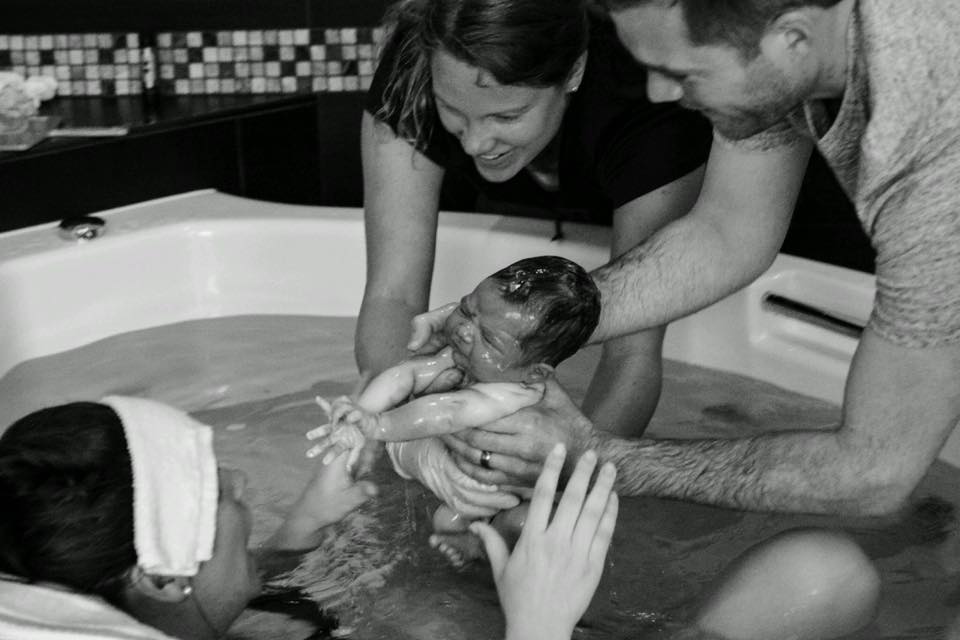Immersion in water during labour was popularised as a formal method of analgesia by Odent in the 1970s (Beake 1999), and became widespread after the Winterton Report recommended that all maternity services provide women with the option to labour or deliver in water (House of Commons Health Committee, 1992).
As with all aspects of midwifery care, the use of water during labour and birth requires evaluation of associated benefits and risks, yet there are no large, collaborative, randomised controlled trials to date (Nikodem, 2000).
This paper clarifies the RCM’s position and recommendations to its members. It should be used in conjunction with local policies and guidelines.
Introduction It has been estimated that 50 per cent of maternity units now provide facilities for labour or birth in water, and that between 15% and 60% of the women attending those units choose to use these facilities.
The number of births occurring in water is much lower, however; between April 1994 and March 1996, a survey identified only 0.6% of births in England and Wales occurring in water, 9% of which were home births (Tookey and Gilbert, 1999).
These averages conceal wide variation, with some units passively or actively discouraging women from using water, while one birth centre reports up to 80% of women using water during labour, with up to 79% giving birth within the pool (Beech, 2000).
There is not enough evidence to evaluate the use of immersion in water during labour (Nikodem, 2000), but both potential benefits and adverse effects have been described in the literature. Beneficial effects include maternal relaxation, less painful contractions, shorter labours, less need for augmentation, less need for pharmacological analgesics, more intact perinea, and fewer episiotomies (Schorn et al, 1993; Garland and Jones, 2000).
Among the adverse effects discussed are unrealistic labour expectations, restricted mobility, infection, and the potential problem of the neonate inhaling water (Alderdice et al, 1995; McCandlish and Renfrew, 1993).
The systematic review produced by the Cochrane Library highlights that ‘although no significant adverse effects have been reported, the possibility of adverse outcome for the neonate should not be ignored’ (Nikodem, 2000).
There is clearly a need for more research, and midwives should give high priority to developing midwifery knowledge in this area. In the meantime, the available evidence does not justify discouraging women from choosing this increasingly popular option.
Women experiencing normal pregnancy, who choose to labour or deliver in water, should be given every opportunity and assistance to do so. RCM recommendations
1. All maternity units should develop policies and guidelines, underpinned by the available evidence, on the use of water in labour and birth. These should be developed in consultation with midwives, supervisors, and local user representatives.
2. Managers and supervisors should ensure that midwives acquire and sustain the competence, skills and confidence necessary to assist women who choose to labour or deliver in water (UKCC, 1992a; UKCC, 1992b; UKCC, 1998a).
3. Midwives should ensure they are competent to provide support to women who choose to use water, and should keep themselves updated on the research evidence in this area.
4. Midwives should audit and evaluate their practice, and the outcomes of labour and birth in water, in order to contribute to midwifery knowledge and the development of best practice.
5. All midwives should ensure their record keeping of labour and births in water is accurate and adheres to UKCC standards (UKCC, 1998b). Policies and guidelines for the use of water Every maternity unit should have, or should develop, policies and guidelines on the use of water in labour and birth.
These should be underpinned by the best available evidence, and should be developed in consultation with supervisors and user representatives. They should cover the following areas:
1. Professional expertise
The assistance of women to labour and deliver in water should be considered a core midwifery competence. However, some will have lacked experience in this area, and therefore appropriate education, training and supervision will be necessary. Continuing professional development in this area should be seen as a service requirement.
2. Information for choice
• All women should be offered information on the option of using water in labour and birth. There are no grounds for seeing this option as particularly suitable for, and acceptable to, certain groups of women on the basis of non-clinical criteria.
• All women who express an interest in the use of water should be given full verbal and written information, including where appropriate a copy of the unit’s policy. This should include any expectations of the woman (for example, on the supply of equipment), and what steps will be taken in the event of an emergency.
3. Criteria for use of water Criteria for use of water may include:
• Women’s informed choice
• Normal term pregnancy at 37+ weeks
• Singleton fetus with cephalic presentation
• No systemic sedation
• Spontaneous rupture of membranes < 24 hours Other non-clinical criteria – such as the availability of staff or equipment – may reasonably be deployed; however, as with all other areas of maternal choice, their obstruction of women’s informed decision-making should be actively kept to a minimum.
4. Equipment
• Local policies should specify essential and desirable equipment for the use of water, and make clear who is responsible for supplying it. • All unit equipment should conform to British Safety Standards, and be checked by the Health and Safety Officer (RCM, 1998). 5. Health and safety
• Local infection control policies should cover the use of water in labour and birth, and midwives should ensure they implement universal precautions (RCM, 1998).
• Specialist health and safety advice should be sought to develop policies on pool cleaning.
• Health and safety advice on moving and handling should be adhered to at all times (RCM, 1999).
6. Additional professional issues
• Temperature: All midwives should understand the physiological basis of maternal and fetal hyperthermia, local guidelines should specify target temperatures for the water during delivery and birth (Steer and Deans, 1995; Garland and Jones, 2000). Maternal, core water and room temperatures should all be checked regularly.
• Analgesia: Local guidelines for the use of additional pain relief should be developed in consultation with an anaesthetist, and discussed with all women prior to labour. These should cover all forms of pain relief, including complementary therapies.
• Birth: Local guidelines should be developed to guide midwives on best practice during delivery. These should be underpinned by the best available evidence (Nikodem, 2000).
• Emergencies: Local guidelines should detail what steps are expected in an emergency situation. All midwives, and all women using water for labour or birth, should know and understand these steps.
References
Alderdice F, Renfrew M, Marchant S, Ashurst H, Hughes P, Berridge G, Garcia J (1995) Labour and birth in water in England and Wales: survey report. British Journal of Midwifery 3(7): 376-382 Beake S (1999) Water birth: a literature review. MIDIRS Midwifery Digest 9(4): 473-477 Beech B (2000) Waterbirth: time to move forward. AIMS Journal 12(2): 1-2 Garland D and Jones K (2000) Waterbirth: supporting practice with clinical audit. MIDIRS Midwifery Digest 10(3): 333-336 House of Commons Health Committee (1992) Second Report on the Maternity Services (Winterton report). HMSO: London McCandlish R and Renfrew M (1993) Immersion in water during labour and birth: the need for evaluation. Birth 20(2): 79-85 Nikodem V (2000) Immersion in water in pregnancy, labour and birth (Cochrane Review). In: The Cochrane Library, Issue 2. Update Software: Oxford RCM (1998) Health and Safety Representatives’ Handbook. RCM: London RCM (1999) Handle With Care: a midwife’s guide to preventing back injury. RCM: London Schorn M, McAllister J, Blanco J (1993) Water immersion and the effect on labour. Journal of Nurse Midwifery 38(6): 336-342 Steer PJ and Deans AC (1995) Labour and birth in water: temperature of pool is important. British Medical Journal 311(7001): 390-1 Tookey P and Gilbert R (1999) Perinatal mortality and morbidity among babies delivered in water: surveillance study and postal survey. British Medical Journal 319(7208): 483-487 UKCC (1992a) Scope of Professional Practice. UKCC: London UKCC (1992b) Code of Professional Conduct. UKCC: London UKCC (1998a) Midwives Rules and Code of Practice. UKCC: London UKCC (1998b) Guidelines for records and record keeping. UKCC: London Further reading Brown L (1999) The Tide Has Turned: audit of water birth. British Journal of Midwifery 6(4): 236-43 Burns E and Kitzinger S (2000) Midwifery Guidelines for Use of Water in Labour. Oxford Brookes University: Oxford Jessiman C Byers H (2000) The Highland experience: immersion in water. British Journal of Midwifery 8(6): 357-361 Lawrence Beech BA (1996) Water Birth Unplugged: the proceedings of the first International Water Birth Conference. Books for Midwives Press: Cheshire UKCC (1994) Position Statement – Waterbirth. UKCC: London
Acknowledgements This paper was developed with the assistance of Dianne Garland (Practice Development Midwife, Maidstone), YP Choo (Labour Ward Co-ordinator, Chelsea and Westminster Hospital) and Mary Coe (Community Midwife, Southampton). October 2000 Royal College of Midwives










